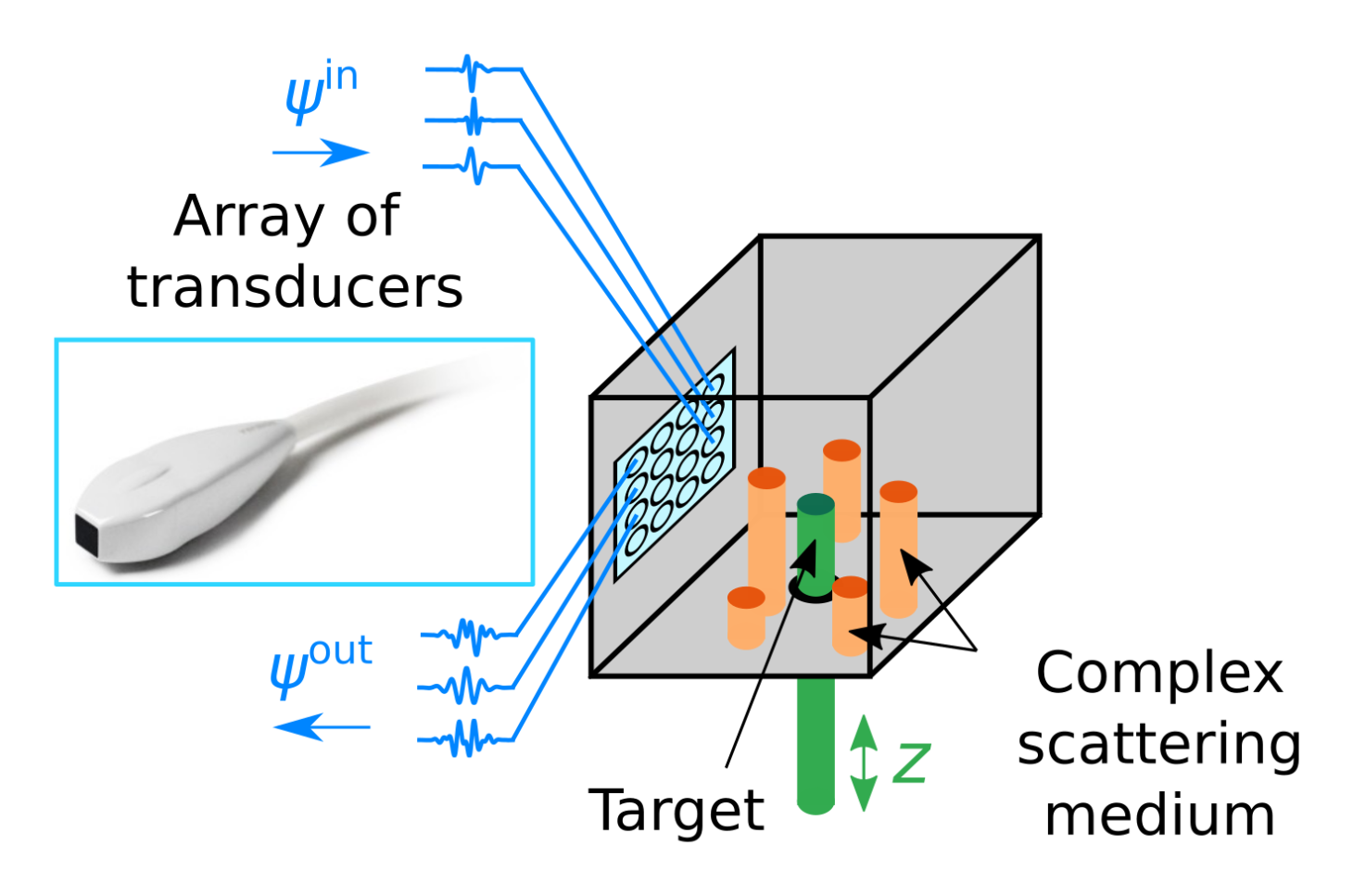- Share
- Share on Facebook
- Share on X
- Share on LinkedIn
Recruitment

PhD proposal, 2024-2027. Funding already secured.
Supervisors: Dr. Dorian Bouchet and Prof. Emmanuel Bossy
Project description
Medical ultrasound imaging is based on a simple principle: an array of sources emit acoustic waves into the medium to be imaged, and these waves are reflected back to a sensor by the object of interest. Acoustic waves propagate in a simple way in soft biological tissues, which allows doctors to easily examine pregnant women using ultrasound waves. However, it remains extremely challenging to perform ultrasound imaging when acoustic waves propagate in complex media. For instance, it is very difficult to visualize the activity of the brain using ultrasounds, because the skull distorts acoustic waves in an uncontrolled way. This challenge motivates us to get a better fundamental understanding of how acoustic waves propagate in complex media.
In the last decades, the possibility to control many independent sources has been widely employed to maximize the acoustic energy anywhere inside complex scattering media. Instead of maximizing the acoustic energy, this PhD project will now tackle the following question: how can we take advantage of these numerous acoustic sources in order to maximize the amount of information delivered to the observer? On the conceptual side, the project associates tools from wave theory and information theory in order to understand how information propagates in complex scattering systems, in both space and time. On the experimental side, the project involves the development of a proof-of-principle system designed to measure the position of a target hidden inside a random scattering medium composed of acoustic scatterers. Using a state-of-the-art array of transducers, the acoustic field will be shaped in space and time in order to measure the properties of the hidden target in the most precise way.
Profile of the candidate
The candidate must have a Master’s degree in Physics or Engineering. He/she needs to be motivated in (i) learning new concepts in physics and (ii) applying them for the experimental development of a new kind of ultrasound imaging system.
References
- D. Bouchet and E. Bossy, Physical Review Research 5, 013144 (2023)
- G. Godefroy, B. Arnal, and E. Bossy, Scientific Reports 13, 2961 (2023)
Download
phd_proposal_acoustic_sensing_en.pdf (PDF, 1.24 MB)
Contact
Dorian BOUCHET
OPTIMA team
dorian.bouchet univ-grenoble-alpes.fr (dorian[dot]bouchet[at]univ-grenoble-alpes[dot]fr)
univ-grenoble-alpes.fr (dorian[dot]bouchet[at]univ-grenoble-alpes[dot]fr)
- Share
- Share on Facebook
- Share on X
- Share on LinkedIn